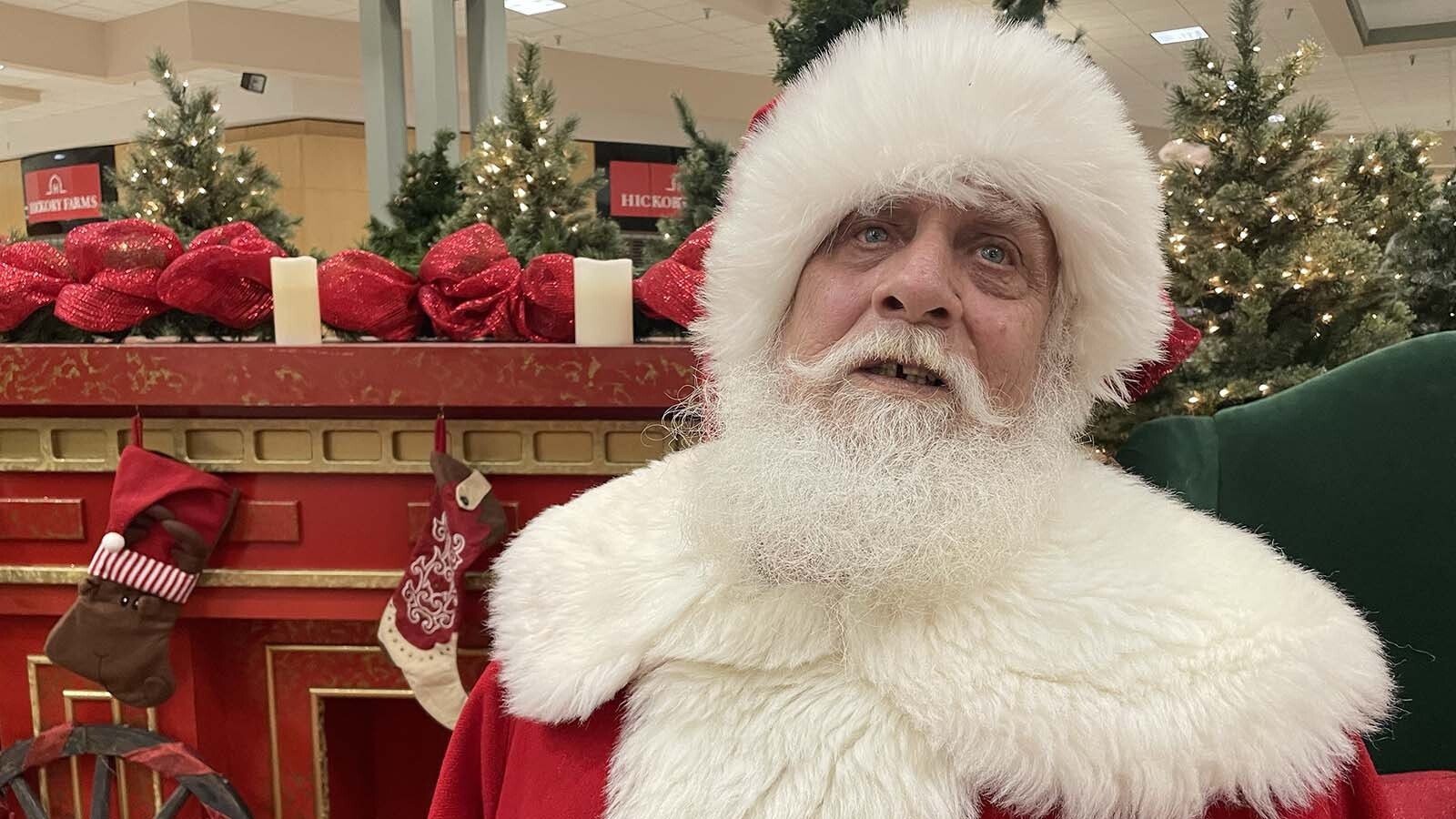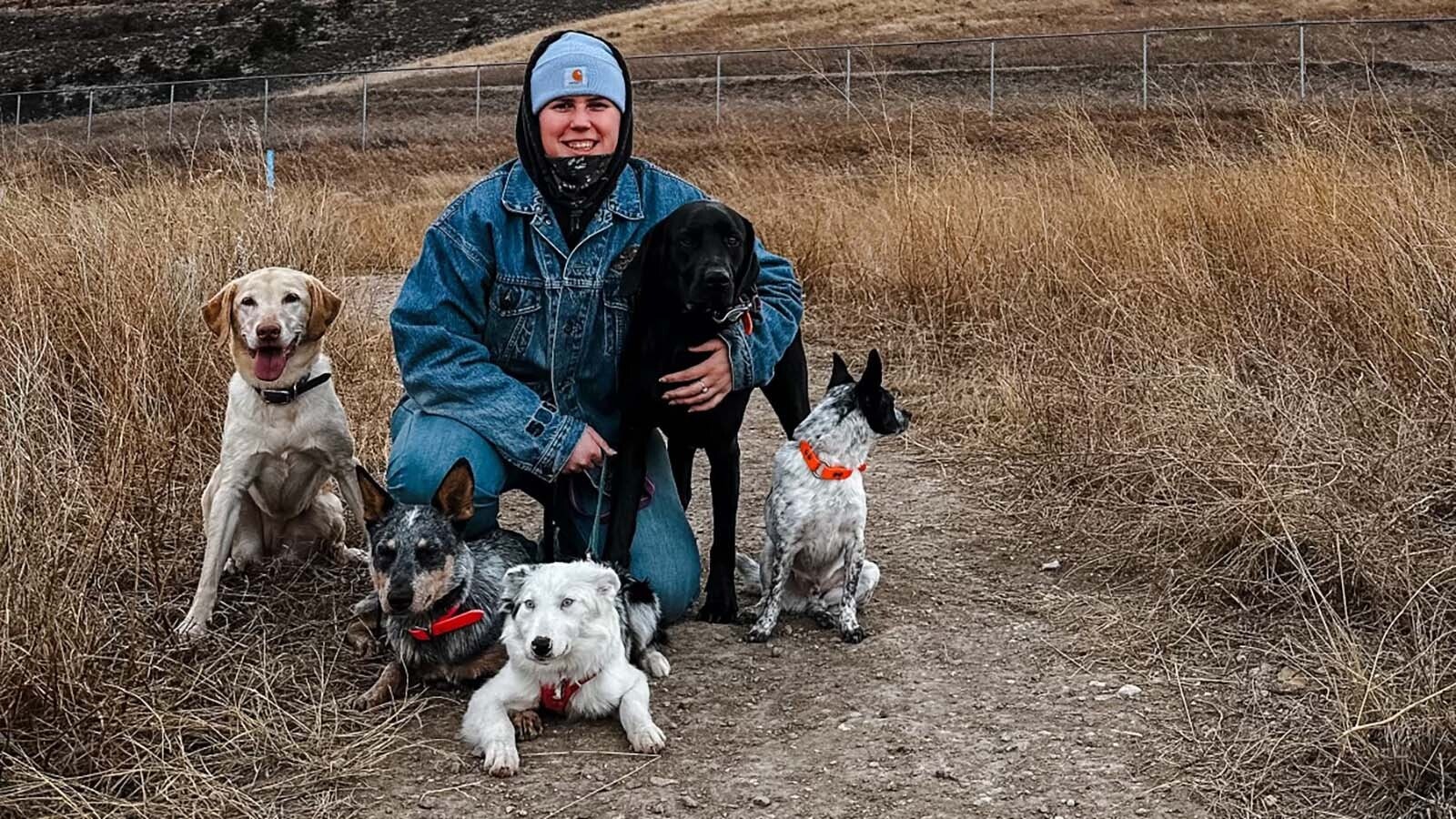CODY — On the lower level of the Draper Natural History Museum at the Buffalo Bill Center of the West, the usually quiet area is bustling with activity.
Under the bright lights, bones are scattered across multiple tables, with several volunteers working to put them together.
At the center of it all is Lee “The Boneman” Post, who is in Cody for two weeks to assemble the skeleton of a 3-year-old male bison, building it bone by bone right on the museum floor.
“It's a puzzle, but it’s absolutely logical,” he said of articulation, or putting bones together. “The way these pieces fit together and form and make joints, and the sequences, it’s art and nature.”
Based in Homer, Alaska, Post has spent more than 30 years putting together the skeletons of whales, moose, wolves, sea turtles and many other animals. His articulated specimens appear in exhibits across five states and three countries.
Not bad for a bookstore owner who fell into this second career.
“I don't even have a college degree, I just figured it out,” he said. “It just takes somebody who's interested and wants to play with the puzzle. And I still own the bookstore. I’ve had the bookstore for 40-some years.”
Building A Second Career
After spending some time as a bike mechanic, Post moved to Homer in his early 20s, and he and his mom purchased a bookstore.
At just 400-square feet though, the store only needed one person at a time to work there, giving Post a decent amount of free time.
As a child, Post was a self-described natural history junkie so of course he spent much of his time at the Pratt Museum (a small natural history museum in Homer).
“That became my second life hanging out at this museum for the winter,” he said. “They showed me this neat whale skeleton that they had collected a couple years before, and said they wanted to put it together as an exhibit.”
Post wanted to help put together the 17-foot beaked whale, but a lack of funding and knowledge on how the skeleton actually went together had the project at a standstill.
The museum staff asked if he wanted to take it on as a volunteer, so Post began making some calls.
“I spent some time as a kid on the East Coast and so I've been to some of those big natural history museums, and they all had big whale skeletons,” he said. “So, I got a hold of the right people and found out nobody was alive that had done those skeletons.
“They were done 100 years before, and nobody had done skeletons in museums since then that I could find.”
Freestyle
With no “skeleton police” to tell him how things should or shouldn’t be done, Post began to come up with a plan on his own.
First, he talked to three people who had built skeletons in modern times. That proved to be no help though, as they were all doing it differently from each other and in ways Post felt over complicated the process.
“I was a bike mechanic in my first life, and I'd done some carpentry, so between those two things I thought of better ways of doing it,” he said.
He got to work, with much of the small town of Homer serving as a sounding board when challenges popped up.
“Everybody knew I was working on this project, so when I got stuck on something they'd give me ideas and I'd go back and I'd try some,” he said.
It took him all winter but he finished the whale for the museum. He enjoyed it so much that over the next 15 years he built up the osteology collection at the museum by salvaging, preparing and often articulating animal skeletons.
Then in the mid 1990s, his career in articulation took another leap when the museum in Homer was awarded a three-year high school/museum collaborative project.
Post worked with high school students on first articulating a 41-foot sperm whale skeleton the museum had collected and cleaned, and then on a dozen other skeletons.
That project led him to begin working mainly with schools and students, as well as writing manuals that can help others who want to do similar projects. And each year he also teaches a class on marine skeleton articulation through the University of Alaska extension in Homer.
“So, it's me getting to teach other generations of students,” he said. “What I do is it's not something that you can go to Yellow Pages in every town and find. I’m it for marine mammals in the country.”
Eventually marine centers and museums also began hiring Post to come in and put together skeletons for their collections with the help of volunteers.
“It’s so fun working with groups of people who are absolutely enthusiastic but don’t know what they're doing,” he said.
Finding A Bison
Post was first at the Draper in 2022 when he helped construct a mountain lion and grizzly bear.
“We had a lot of success with that workshop,” Draper Natural History Museum Curator Corey Anco said. “It was very enjoyable, and it was a huge hit with the public.”
When the Buffalo Bill Center of the West decided to commemorate the 250th anniversary of the founding of the United States with a center-wide exhibition themed on bison, Anco thought it might be a good reason to bring Post back.
But first he needed to find a bison skeleton.
A growing relationship with Yellowstone National Park was the answer. Jill Sholly, who lives in Mammoth and serves as a Draper Advisory Board member, was at the museum shortly after the bear and mountain lion skeletons went on display.
“She thought that it was really neat to see these articulated specimens,” he said. “You go to a lot of taxidermist facilities or other museums, and you see a lot of mounted specimens. But the articulation of a skeleton is quickly becoming a lost art, fewer and fewer people know how to do it and do it well.”
Sholly asked if there was any way Yellowstone could help the Draper and Anco made his request for a bison skeleton.
Two months later he was prepping specimens in the lab at the museum when Sholly came and knocked on the window.
“And she says, ‘Guess what, I think we have an approval to get you guys a bison,’” Anco said. “So Jill was the conduit between Yellowstone National Park and the Draper Natural History Museum.”
The bison was part of the herd within the Northern Range of Yellowstone. Any that leave the park are tested to make sure it doesn’t have brucellosis.
If the bison tests positive, which is the case of the animal given to the Draper, it is removed from the population.
“So, this became a really great opportunity for us to give purpose to this animal beyond life, and to help share that story and tell that story about the incredible and difficult work that many of these wildlife resource managers have to deal with in managing this migratory animal that can be a vector for disease,” Anco said.
Preparing The Skeleton
Anco and curatorial assistant Amy Phillips drove to Gardner, Montana, in February 2024 to pick up the bison carcass.
They partnered with the Wyoming Game and Fish Department in Cody for the initial breakdown of the animal.
“They were generous in providing a space to help us get it into more manageable-sized pieces that were more easily worked on,” he said.
Anco, staff and volunteers are in the lab on Tuesday mornings from 9 a.m. to noon and spent part of that time over the next year and a half working to prepare the bison.
They removed as much soft tissue as they could with scalpel blades and other knives to minimize the amount of soft tissue that would just decompose on its own.
“Once we got everything that we could get with blades, we then brought the bones to our domestic beetle colonies and they brought it all down to bone, with the exception of the skull,” Anco said. “The skull was too big to fit in our tank, and so we had to macerate that.”
The skull was placed in a tank of water and sealed on top. Over the course of two summers, the naturally occurring bacteria decomposed the soft tissue.
“The rest of the bones we worked through quicker, but what we learned from the bear was that there is a lot of marrow in these large mammals,” he said. “We wanted to eliminate as much of that as possible. So to do that, we often drilled into these bones and then we simmered them in hot water. And that simmering helped liquefy the fatty tissue and leach it out.”
From there the bones went into baths of ammonia. Larger bones then were placed into peroxide to be gently whitened. After all of that, bones were dried, labeled and ready for Post and the crew to get started building.
The Work Begins
This is the first freestanding bison Post has ever completed, but he said it’s similar to other animals he’s done. He began working since Aug. 4 and will be in Cody through Friday.
“All the mammals I’ve worked on have four legs, a backbone and a skull,” he said. “They all look similar.”
The first day was spent setting up the workspace, getting organized and planning out tasks for day two. Post usually has more volunteers than jobs to do, but he tries to keep everyone as busy as possible, putting volunteers in groups of two or three.
“People really get into this,” he said. “They don't want to leave. They come every day, even if they have nothing to do.”
With each team Post shows them the process, whether it is gluing pieces to a metal rod, drilling holes through vertebrae or filling holes when a mistake has been made.
“It's taking people a couple of times and walking them through, and then just kind of checking in on them enough to make sure they're not screwing up,” he said.
He keeps a notebook of every project he’s ever done which includes sketches, notes about what went wrong and what went right, and what tools were needed to help along the process.
“It's just gotten easier and easier over the years, as I've learned more and more over the years,” he said.
While much of the skeleton can be put together with volunteers fresh off the street, some parts, like the skeleton, require a more skilled and experienced hand.
“It’s a young animal so the skull is actually 26 pieces that haven't fused yet and they all have a little bit of wiggle to them. So I'm looking for somebody with experience on something super delicate.”
There’s also a few bones that will need to be rebuilt due to damage to the neck area, including the axis bone. However a museum in Idaho has scans of every single bison bone that can be downloaded and printed on a 3D printer. The team got the image needed and the bone was printed at Ace Hardware.
On day three a platform was set up so that as parts of the skeleton are finished they can be suspended from ropes until it is completed. This will allow Post to take accurate measurements before it is put on a rolling stand.
Once the skeleton is finished, it will be exhibited on the lower level of the Draper Natural History Museum in a temporary place near the Monarch of the Skies Gallery until next year, when the Buffalo Nation exhibit opens.











